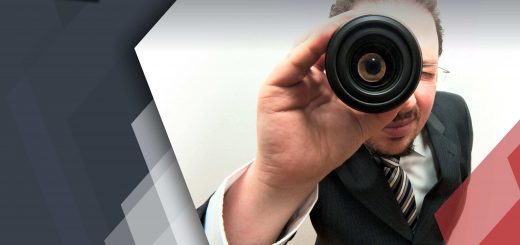How SagaciousElevate Demonstrated Different Views in Utility Patents with Accurate Drawings
Accurate patent drawings are a cornerstone of securing utility patents, as they visually demonstrate the invention’s structure, functionality, and components. A single drawing, however, can only capture one perspective at a time, which is why patent applications often require multiple views to fully disclose an invention. These drawings, typically in black and white as per patent office guidelines, are essential in illustrating the invention’s features as laid out in the claims. In this case study, we explore how we helped a client create precise and compliant patent drawings that successfully secured a patent.
Table of Contents
The Client’s Challenge
A US-based client in the automobile industry approached SagaciousElevate for assistance with their patent drawings or their utility patents. The client was unfamiliar with patent office guidelines and unsure about the specific views required to fully disclose their invention. They understood that failing to provide comprehensive and accurate drawings could risk rejection and needed expert guidance to ensure compliance and clarity.
The project presented several challenges:
- Creating drawings with precise shapes, sizes, and dimensions while adhering to the client’s specifications.
- Selecting the most appropriate views to showcase the invention without inflating costs.
- Ensuring all drawings meet the stringent guidelines of the relevant patent and trademark office (PTO).
- Capturing all features mentioned in the claims.
Different Views Required for Utility Patents by Client
To meet the disclosure requirements for utility patents, the client needed several key views. Each view came with its own technical requirements and challenges. Below are the key views required in this project, each with its unique challenges:
Perspective View
The perspective view offers a three-dimensional representation of the invention, showcasing its height, width, and depth. Moreover, it provides a realistic depiction of the invention and helps reviewers better understand its structure. The team’s challenge here was to choose an angle that presented the invention in the most informative manner.

Alternate Position View
This view demonstrates the range of motion of a component by showing it in different positions. SagaciousElevate’s illustrators overlaid one or more alternate position views on the original view in phantom lines. To demonstrate this view, our patent drawing experts had to show the moved position by a broken line which is superimposed upon a suitable view.

Exploded View
The patent application had to include the exploded view of the invention to show the relationship and order of parts in an assembly, showing how parts connect or fit together. Exploded views with the separated parts embraced by a bracket, to point out the connection or order of assembly of varied parts, are acceptable. When an exploded view is shown during a figure that is on an equivalent sheet as another figure, it should be placed in brackets. If one is not using the projection lines that show the assembly path, then one should use a bracket to show that all parts are part of the exploded assembly.

Partial View
Large inventions, such as machinery, often require partial views when a single sheet cannot display the entire design. In such a case, views on two or more sheets must effectively form one complete view. Furthermore, the views on several sheets must be arranged in a way that the entire figure is assembled without secreting any part of any of the views on varied sheets. A very long view can also be divided into several parts by placing these partial views one above the other on one sheet. However, the connection between the various parts must be clear and meaningful. The team ensured the partial views were seamlessly connected to form a cohesive representation, a critical requirement for utility patents.

Sectional View
To show the internal part and components, illustrators had to show the cross-sectional view of the part/assembly. The sectional view had to be indicated by a broken line on the view from which the section was cut. Similarly, it required hatching to show the section portions of an object. Hatching is regularly spaced oblique and parallel lines which can be distinguished easily. Similarly, if it is impossible to put reference characters outside the hatched area, hatching can also be broken off wherever reference characters are inserted. Preferably, hatching must be at an angle, instead of being horizontal or vertical.

A cross-section must be drawn to point out all materials just as they are shown within the view from which the cross-section was taken. The various parts of a cross-section of an equivalent item should be hatched within the same manner and must accurately and graphically indicate the character of the material(s) illustrated in the cross-section.
Different parts of the cross-sectioned views should have different hatch angles. Similarly, different types of hatching should have different conventional meanings with regard to their character or nature. The figure below illustrates the same.

Miscellaneous
In some cases, process or method demonstrations using flowcharts, block diagrams, or graphs are required for utility patents. Although not a focus of this project, these views are often necessary for specific patent applications.
SagaciousElevate Solution
The client was not aware of the illustrations and was in need of assistance. SagaciousElevate’s patent illustrators first conducted the discussion with the client to talk about the above-mentioned views. After understanding his requirements, the team deployed a computer-aided design (CAD) program/software.
Illustrators used technical dimensioning techniques like stack-up analysis in order to maintain the precision in the size and shape of the product. Furthermore, sectioned views of product were used to make 2D shapes and measurements clearer.
Thereafter, the patent illustration team added labelling, text and reference numbers in the diagrams in adherence to PTO guidelines. Furthermore, the professional illustrators exercised due diligence in cross-verifying sheet size and margin, text size, line durability and quality of patent drawings. Finally, after conducting multiple quality checks, they delivered the drawings to the client for review as per the patent office guidelines.
Outcome
The client was highly satisfied with the quality of the drawings delivered by SagaciousElevate’s patent illustration team. They appreciated the timely delivery of the project, which adhered completely to PTO guidelines. As a result, the client successfully secured a patent grant from the respective patent office. The strong partnership between the client and SagaciousElevate continues, with the client regularly assigning new and challenging patent drawing projects to the team.
Need professional support for your utility patents? Let SagaciousElevate’s expert patent drawing/illustration services simplify the process and enhance your patent application’s success. Get in touch today to ensure your invention is showcased effectively and maximize your chances of a successful patent grant!
– Sarvil Vikram Singh and Sudip Kar (Illustration) and the Editorial Team
Having Queries? Contact Us Now!
"*" indicates required fields




